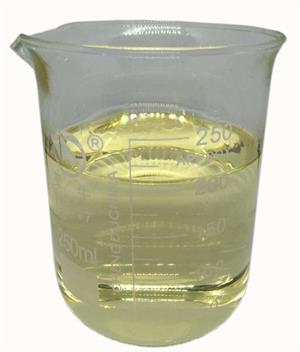

Spinning oil
The liquid substance added to spinning solution before chemical fiber or synthetic fiber is spun into fibers. The cohesion and wettability required for the formation of fibers are given so that the suction, stretching and combing of the post-processing process can proceed smoothly, and the resulting fibers have smooth, soft and antistatic properties. Spinning finishes are formulations of a class of special Ff3 formulations derived from the combination of certain surfactants and are anionic, positive and nonionic surfactants and their mixtures.

Oil for polypropylene fiber
Oil for polypropylene fiber is special oil used in the spinning process of polypropylene fibers. They have the functions of smoothing, clustering and antistatic. It is suitable for the production of polypropylene multifilament, textured yarn and heterogeneous yarn.
Chinese name:丙纶油剂
English name:Oil for polypropylene fiber
Application:Spinning process of polypropylene fiber
Classification:Printing and dyeing auxiliaries
Essential information:Yellowish-brown viscous liquid. The effective ingredient is more than 95%. The viscosity is 80 ~ 100mPa / S (20 C). 1% the pH value of aqueous solution is 7~8. Emulsion stability (15%, 15~35 degrees Celsius) 48 hours.
Product description:
Polypropylene fiber (PP) has been developing rapidly in China because of its light texture, high strength, good elasticity and wear resistance. However, because there is no polar group in the molecular structure of polypropylene fiber, its hygroscopicity is small, conductivity is poor, structure is close, friction coefficient is large and it does not contain fatty substances, so the silk slips easily and scatters in the subsequent spinning process, resulting in wool and waste silk. This requires oil treatment between the spinning and winding tube, forming a layer of oil film on the surface, improving the smoothness of the fiber, reducing the friction coefficient of the tow, enhancing the spinnability, improving the spinning efficiency and protecting the quality of the fiber.
The formulation of polypropylene oil is composed of many components, mainly smoothing agent, antistatic agent, emulsifier and other minor additives, mainly using surfactant products. At present, the main smoothing agent used for PP spinning agent is fatty acid ester smoothing agent. Antistatic agents can be classified into anionic, cationic, nonionic and amphoteric surfactants according to the charge properties of the polar groups connected with long-chain alkyl groups. Generally speaking, the best antistatic effect is cationic and amphoteric, followed by anionic, non-ionic antistatic worst. Considering the cost factor, the most widely used antistatic agents are fatty alcohol phosphate (salt) and alcohol ether phosphate (salt). Since spinning oil is often used as an oil in water suspension, emulsifiers must be added. The function of emulsifier is to balance the surfactant monomers in the oil through physical and chemical processes, so that the oil can become a homogeneous, transparent and stable oil-like solution, and can become a homogeneous, transparent and stable emulsion when the oil is used. When selecting emulsifiers, it is necessary to consider its compatibility with other ingredients in the formula.
In addition, in the use of polypropylene oil, good ventilation in the room, 20 ~ 30 C cold dark place, must not be placed in high temperature places.